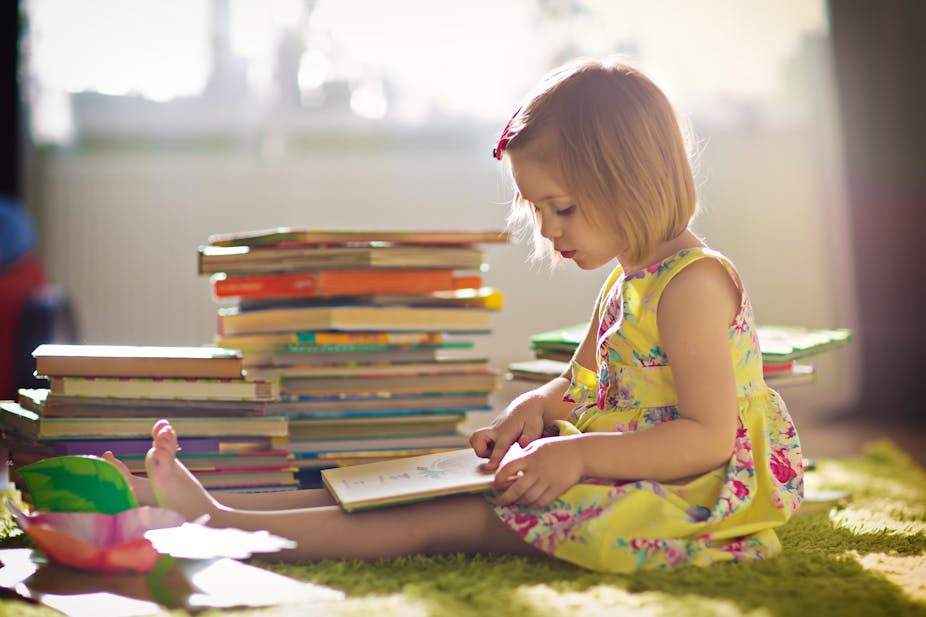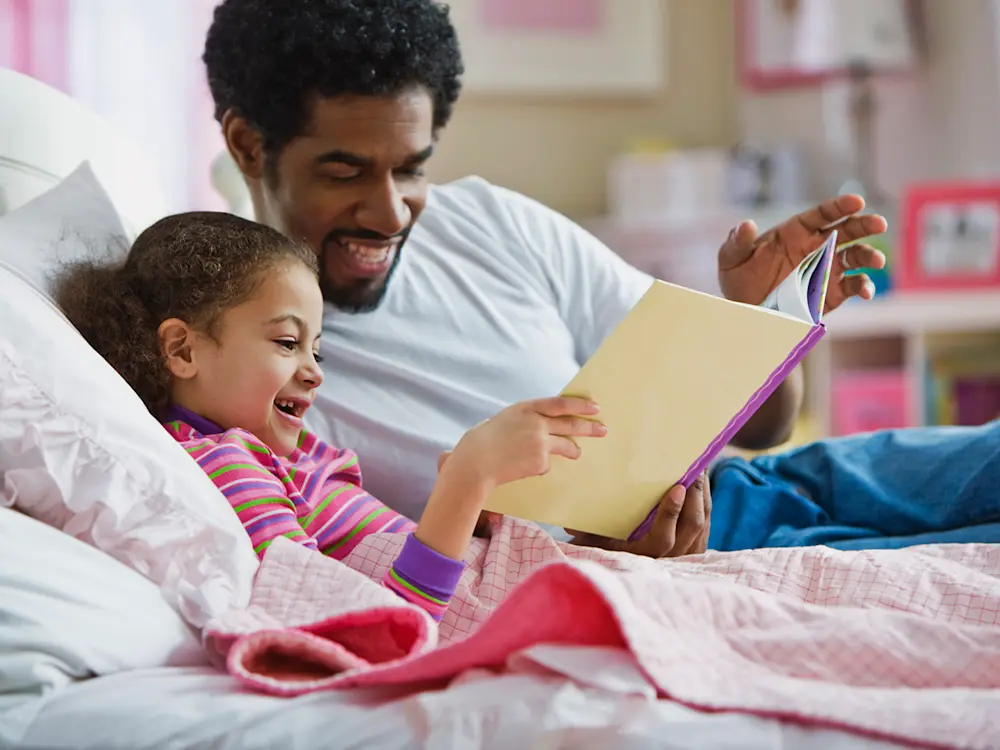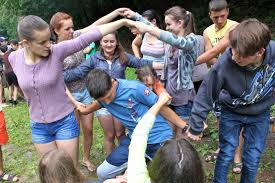January: Literacy
It’s always a good time to think about reading, a fundamental building block of learning. We know that first children learn to read, and then they read to learn. No matter how old your kids are, or how well they are reading now, you can help them become better readers.

Power Parent: January 2021 covers each of the following articles:
- NEED TO DO: GRPS Curriculum Resources and Supports contains a link to a helpful curriculum guide used across the district, alongside a list of helpful links to help your family navigate your child’s curriculum
- Discover a list of early literacy resources in GOOD TO KNOW: Literacy Resources for the Early Childhood Student
- Parents of English Language Learners will find a list of resources for their child under SETTING GOALS: English Language Learners (ELLs)
- Under CHECK IT OUT: Resources for the Elementary School Student, find resources to support your child as their literacy skills start to take shape and develop
- Peruse a list of last year’s most highly rated books in NETWORKING FOR SUCCESS: Top Children’s Books from 2020
- Under NAVIGATING ACHIEVEMENT: Literacy Resources for the Middle and High School Student, discover resources to fine-tune your student’s literacy acquisition in their adolescence
- Find a helpful list of topics to keep the conversation around literacy going in FAMILY CONVERSATIONS: Purposeful Conversations
GRPS Curriculum Resources and Supports
Grand Rapids Public Schools’ Curriculum Guide shares important information about Academic Preparation for students in grades 9-12.
GRPS Parent Toolkit Contents
Literacy Resources for Early Childhood
Did you know that children begin their path to reading as babies when they hear and respond to the sound of a human voice? Literacy—the ability to comprehend and communicate through reading and writing—begins as babies understand your spoken words. Listening, talking, reading, and writing are all parts of early literacy learning—and they’re all connected.
On the road to becoming readers and writers, young children need many opportunities to hear and understand spoken language. This helps them become aware of the different sounds of language. They also need to learn about print—letters and words seen in books and all around them at home and in their community. Young children need writing to help them learn about reading, and reading to help them learn about writing. However, they need to talk and listen before learning about both!

Young children can learn about literacy through everyday activities at home. It’s especially important for families to encourage a love of reading and to demonstrate how writing is used to communicate information and ideas. Ask your child to tell you about her drawing, then write her words on the back of the paper. This helps her learn that the letters and words you are writing have meaning. When you listen as she “reads” her scribbles, you give meaning to her own marks.
What do most young children learn about literacy in the preschool years?
They learn to…
- name and rhyme alphabet letters
- hear rhymes and sounds in words
- recognize and write their own names
- use new vocabulary words in their conversations
- listen to stories and understand what they hear
Nurturing a love of literacy

How can you encourage your child to love reading, writing, and language so much that he begs for a bedtime story or a trip to the library? In any home, there are countless ways to encourage a child’s love of reading, writing, speaking, and listening. Here are simple ideas for including literacy in your everyday routine.
Talk and listen.
Hold meaningful, thought-provoking conversations with your child. Talk about things that he did or things she finds interesting. While you listen and respond to what your child says,
- introduce new words, like colander or automobile.
- expand on what she says, offering more description and using more mature language (Your child: “It runned out.” You: “Your marker ran out of ink!”).
- challenge him to imagine, remember, and think about things he sees and hears around him.
- ask him to tell you about the best thing that happened that day.
Read aloud together.

Research has found that one of the most important things parents can do to help their child build reading and writing skills is to read aloud. To make the most of this time together,
- read aloud at least once every day
- read favorites again and again
- talk about the story before, during, and after reading
- ask her teacher what kinds of books and authors she likes best at school
- ask a librarian to suggest some diverse and age-appropriate children’s books, poetry collections, and songs
- share a variety of literature (stories, poems, and informational books) over time
- suggest activities that go with the books you read (“In this book, Yoko brought sushi to school for lunch. What special food would you like to make for lunch?”)
ELL Resources by Grade
These resources for English Language Learners (ELLs) from Colorín Colorado are age-specific and are organized by grade. Some resources may be adaptable for younger or older students.
Each section contains a variety of resources, including articles, videos, webcasts, tip sheets, and recommended websites.
ELLs in Middle & High School: This section includes a number of resources focused on English Language Learners (ELLs) in middle and high school. Topics include reading instruction for older students, content instruction, social and emotional issues, and college readiness.
Literacy Resources for Elementary School
Upon entering third grade, students will find their reading abilities challenged much more than in earlier grades. Texts will be longer and deeper. In other words, students will no longer simply need to recall factual information from a story — they’ll be required to notice underlying themes and ideas as well. Because this can be a daunting task, third-grade teachers may present a plethora of reading strategies for students to use.

Pre-Reading
Before a student even begins reading, he needs to prepare his mind for the task ahead. First of all, a good reader will set a purpose for reading: is the child reading for entertainment, or is she reading to learn? Once a purpose has been set, a reader may preview the text by reading the back cover, flipping through the pages or reading a book review in order to familiarize himself with the text. By doing so, the child will be able to ask questions about the text, and possibly make predictions about what will happen throughout the story. By asking questions and making predictions, the student becomes an active participant in the process of reading, and will be engaged by the text.
During Reading
By keeping an active mind while reading, students will avoid the dreaded “hypnosis” akin to the feeling you get driving on a long highway — reading three pages before realizing you stopped paying attention long ago. The predictions a reader makes before reading are not set in stone; they can be evaluated, tweaked or tossed out altogether as the child progresses through the story. Questions that were asked may have been answered, or may have led to subsequent questions (thus keeping the child engaged throughout longer texts). Furthermore, while reading, students may be reminded of other books, movies or real-world events that make the events of the story pertinent to her life. By keeping an active mind during a reading session, children will continue to grow as readers and as knowledgeable members of society.
After Reading
After a reading session or text has been completed, a reader should always spend time reflecting on what she has just read. She may choose to summarize the events of a story in writing or through other media, or may simply talk to a friend about the book, perhaps recommending it to someone who shares a similar interest. The main purpose for after-reading activities is for students to synthesize the information read and make it their own. By taking in the text, reflecting on it and expressing how the story affected her, the reader turns simple words on piece of paper into an existential experience.

One Step Further
Even after a post-reading session, there are many ways adults can supplement a child’s reading. Find out what really interested the reader about the text, and find other media relating to it. Watch the movie version of a book and discuss the similarities and differences between the two forms of media. Co-author a book review or recommendation with the child, making sure to include a short summary and some outside research on the theme or topic of the text. Any action that furthers a child’s understanding of a text and solidifies the importance of reading will benefit the student for years to come.
A great way to learn is through music. Check out the following links to help your child become a better reader (and maybe even a better singer.)
- Sing Those Strategies!: Engaging Students in Reading Comprehension Strategies
- Attack that Word: Reviewing Decoding Strategies
Literacy Resources for Middle and High School
Whether you examine any of the research on how the brain acquires information, you will find there are 20 ways to deliver instruction. These instructional strategies increase academic achievement for all students regardless of grade level or content area, decrease behavior problems and make teaching and learning engaging.
- Brainstorming and Discussion: Engaging students in a spirited discussion is a useful way to enhance comprehension. Teachers often ask recitation questions where the answer choice is either right or wrong. Discussion questions, on the other hand, can challenge students’ thinking since there can be more than one appropriate response. As a teacher, focus on facilitating discussions between and amongst students.
- Drawing and Artwork: Many students have a natural affinity for drawing. Use it! I could have stopped periodically and had students draw a scene from The Lottery. A picture of the box in which the lottery slips were kept would have been a good way to ascertain students’ attention to detail.

- Field Trips: The brain remembers what it experiences when it travels to places in the real world. Having students make written predictions regarding what they will see on the trip and then write about what was seen are good literary activities to incorporate. Virtual field trips enable students to travel to places that would otherwise be inaccessible or cost prohibitive.
- Games: Nothing facilitates a good review better than playing a game. Dividing students into three heterogeneous teams and competing in a spirited game of Jeopardy is a good way to review major concepts prior to a test. Tossing a Nerf ball for students to catch is a great way to call on students to respond.
- Graphic Organizers, Semantic Maps, and Word Webs: I would be hard pressed to teach any comprehension skill without the use of graphic organizers. This strategy appeals to both hemispheres of the brain. Create mind maps for teaching main idea and details, sequence of events, cause and effect, compare and contrast, and many other comprehension skills.
- Humor: The job of the “class clown” is to research an approved joke and tell it at a designated time during the period. This role rotates among all students who choose to fulfill it. Jim Carey related the story of how one of his high school teachers made a deal with him that if he participated in class and completed all homework, he could have the last minute of class to tell a joke. The rest is history.
- Manipulatives, Experiments, Labs, and Models: Having students read and follow the directions for an experiment or for building a model is a way to integrate literacy across the curriculum.
- Metaphors, Analogies, and Similes: One of the highest level thinking strategies is the use of metaphors. When a student can find ways to compare two or more dissimilar things, they are really using their brains. For example, when teaching main idea and supporting details, I compare it to a table and legs.
- Mnemonic Devices: Every content area contains acronyms and acrostics, shortened ways of helping students retain content. While these may not foster higher levels of thought, they go a long way toward increasing the amount of content students can remember.

- Movement: Movement is my favorite strategy, since anything students learn while in motion has a better chance of being remembered. Having students form a living timeline is an effective way to teach and learn sequence of events.
- Music, Rhythm, Rhyme, and Rap: Have students create a song, rhyme, or rap that depicts students’ understanding of a concept previously taught. While completing this assignment, they must employ one of the highest levels of thinking—synthesis—or the ability to take information and put it into a different form.
- Project-Based and Problem-Based Learning: Take 10 or 15 literary objectives and incorporate them into a real-life project or give them a relevant problem to solve. These objectives will be mastered so much easier if students encounter them within the context of real life.
- Reciprocal Teaching and Cooperative Learning: Having students sometimes work in pairs or teams to accomplish curricular objectives is a good way to ensure that they are career and “life” ready since the ability to work together is a major workplace and community competency.
- Role Plays, Drama, Pantomimes, and Charades: When students act out the steps in a math word problem, pantomime a content-area vocabulary word as classmates guess it, or dramatize a scene from history, it goes a long way toward enabling them to remember the information prior to and after a test.

- Storytelling: While invaluable in social studies, storytelling is a cross curricular strategy. Stories have a beginning, middle, and end and connect content together. These connections facilitate memory. Tell stories as you deliver content and then have students create their own and watch recall improve.
- Technology: The use of technology is another workplace competency that every student should acquire prior to graduation. It is essential since so much literacy today involves computer literacy. However, I would like to add a word of caution. I have observed students who are so engrossed in technology that they have little time for anything else such as developing the social skills necessary for successful teamwork or the movement so essential for good health and long life.
- Visualization and Guided Imagery: When authors do not provide visuals in a story, novel, or textbook, good readers are able to create their own visuals of what they are reading. Many students find this strategy difficult to implement since so many of the technological devices they interface with today have visuals provided. Pausing during read alouds and having students develop pictures in their brains of what they are seeing as they read is a good way is a good way to help them perfect their visualization skills.
- Visuals: We live in an extremely visual world. So visual, in fact, that at least 50% of students who walk into any classroom today will be predominantly visual learners. Comprehension is facilitated when students have visuals (pictures, captions, bold and subheadings, charts, and graphs) to assist them.
- Work Study and Apprenticeships: Work study refers to apprenticeships, internships, and externships. In other words, it is on-the-job training. Can you begin to imagine how much informational text reading and comprehension would occur when students are learning to repair an engine, become a dental hygienist, or prepare culinary delights?
- Writing and Journals: I have known good readers who were not necessarily good writers, but I have not known the opposite. Those who write well usually have a good command of the language which they use expertly to communicate their message. Even stopping periodically for quick writes facilitates memory and understanding.
Six-Step Checklist for Holding Powerful Conversations
The following checklist will help guide you in holding powerful and purposeful conversations. Use it before and during the conversation to help keep your purpose clear, the conversation safe, and your preferred outcome in sight.
- Center: How will I remind myself to center before the conversation and to re-center periodically?
- Purpose: What is my purpose? Is it a useful purpose?
- Inquiry: What are some honest, open-ended questions I might ask my partner? What do I need to learn about how s/he sees this situation?
- Acknowledgment: What feelings might surface that I can acknowledge? How will I remember to summarize?
- Advocacy: What is my primary message? How will I tell my story while maintaining a respectful and non-judgmental stance?
- Move to Action/Build Agreement: What are possible scenarios my partner might offer? What will I suggest? What is my preferred outcome?

Possible Openings
- I have something I’d like to discuss with you that I think will help us work together better.
- I’d like to talk about ____________ with you, but first I’d like to get your point of view.
- I need your help with what just happened. Do you have a few minutes to talk?
- I need your help with ____________. Can we talk about it (soon)? If they say, “Sure, let me get back to you,” follow up with them.
- (Third Story) I think we have different perceptions about _____________. I’d like to hear your thinking on this.
- I’ve noticed a recurring argument (conflict, disagreement, problem) we seem to have. I’d like to talk about why that happens.
- I’d like to see if we can reach a better understanding about ___________. I really want to hear your feelings about this and share my perspective as well.



